Early Spring 2022 Snapshots From Extension’s Pollinator Paradise Garden
go.ncsu.edu/readext?865280
en Español / em Português
El inglés es el idioma de control de esta página. En la medida en que haya algún conflicto entre la traducción al inglés y la traducción, el inglés prevalece.
Al hacer clic en el enlace de traducción se activa un servicio de traducción gratuito para convertir la página al español. Al igual que con cualquier traducción por Internet, la conversión no es sensible al contexto y puede que no traduzca el texto en su significado original. NC State Extension no garantiza la exactitud del texto traducido. Por favor, tenga en cuenta que algunas aplicaciones y/o servicios pueden no funcionar como se espera cuando se traducen.
Português
Inglês é o idioma de controle desta página. Na medida que haja algum conflito entre o texto original em Inglês e a tradução, o Inglês prevalece.
Ao clicar no link de tradução, um serviço gratuito de tradução será ativado para converter a página para o Português. Como em qualquer tradução pela internet, a conversão não é sensivel ao contexto e pode não ocorrer a tradução para o significado orginal. O serviço de Extensão da Carolina do Norte (NC State Extension) não garante a exatidão do texto traduzido. Por favor, observe que algumas funções ou serviços podem não funcionar como esperado após a tradução.
English
English is the controlling language of this page. To the extent there is any conflict between the English text and the translation, English controls.
Clicking on the translation link activates a free translation service to convert the page to Spanish. As with any Internet translation, the conversion is not context-sensitive and may not translate the text to its original meaning. NC State Extension does not guarantee the accuracy of the translated text. Please note that some applications and/or services may not function as expected when translated.
Collapse ▲In late 2008, I planted a demonstration pollinator garden at Chatham Mills to provide forage from early spring to late fall for pollinators such as honey bees, native bees, butterflies, flower flies, hummingbirds, beetles, and other beneficial insects. The garden features over 225 unique species of perennials, 85% of which are native to North Carolina. The garden is a great teaching tool that I use to conduct workshops and tours for hundreds of folks each year. It has taught me so much and I enjoy sharing this knowledge with others. Below you can see photos of the pollinator garden from early April through mid-May. There are 57 species in bloom in mid-May!

The apple serviceberry and the dwarf fothergilla came into peak bloom in early April. Photo by Debbie Roos.

Carolina anole sunning on a bronze fennel stem in early April. Photo by Debbie Roos.

The Andrenid mining bees were all over the possumhaw blooms in mid-April. Photo by Debbie Roos.
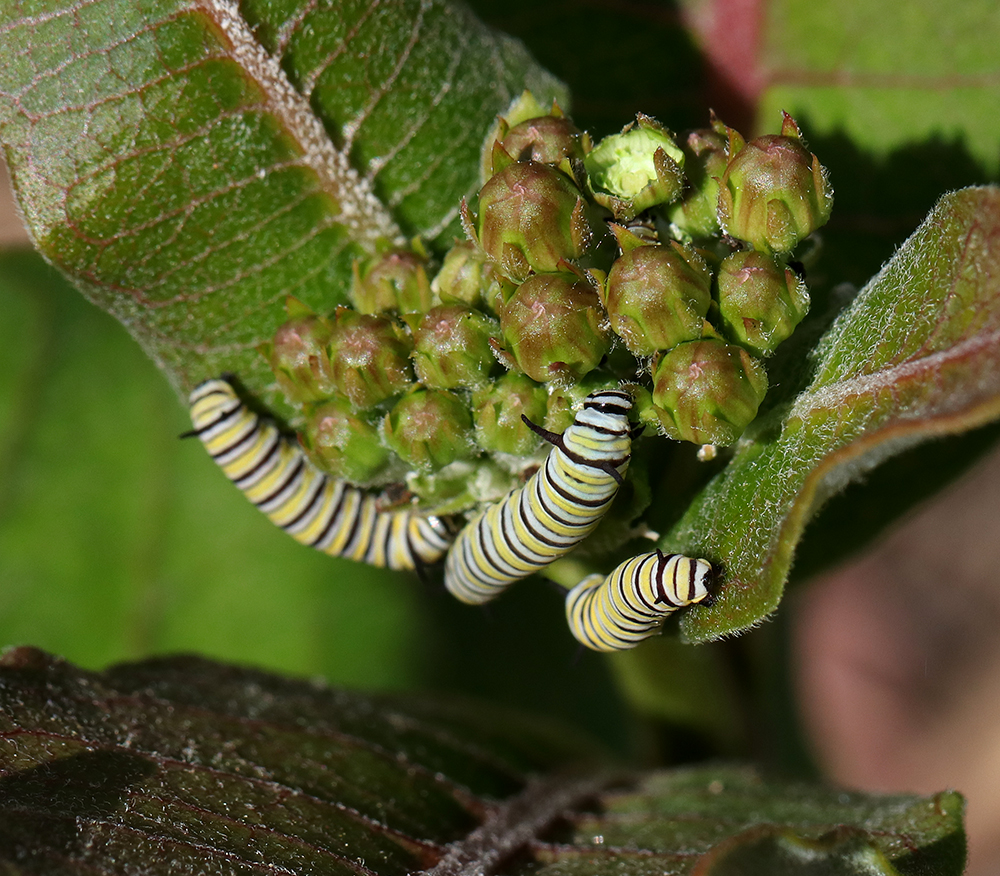
Early instar monarch caterpillars in purple milkweed in late April. Photo by Debbie Roos.

Arkansas blue star, golden alexander, and eastern wild columbine in early May. Photo by Debbie Roos.
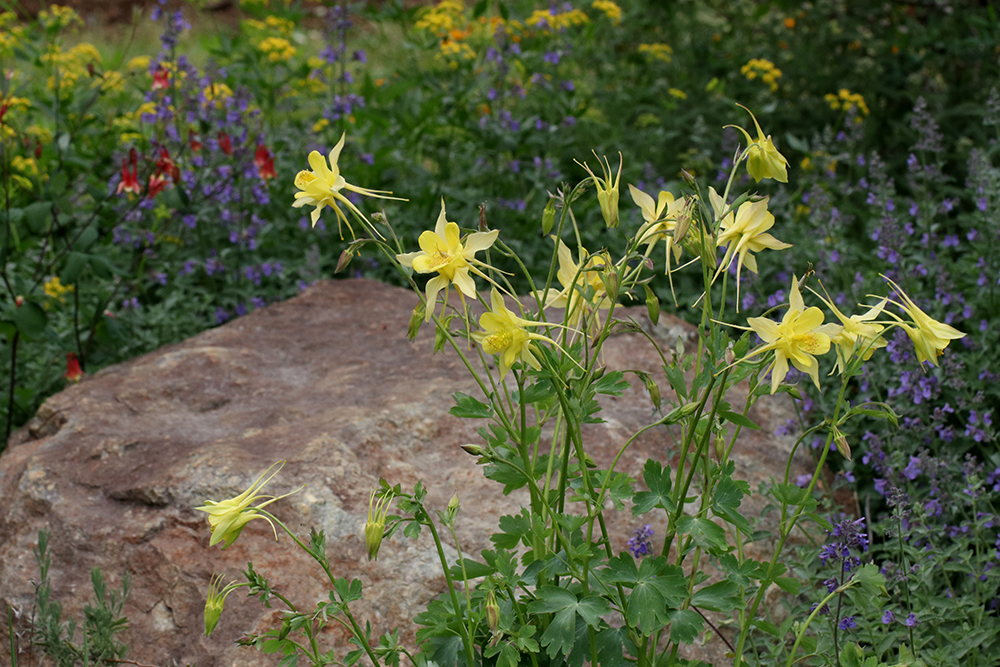
Golden columbine, eastern wild columbine, golden alexander, and catmint in early May. Photo by Debbie Roos.

Narrow leaf Carolina phlox with evening primrose in early May. Photo by Debbie Roos.

Bumble bee foraging on downy wood mint in early May. Photo by Debbie Roos.

Golden columbine, a southwestern native, is a showstopper in early May. Photo by Debbie Roos.
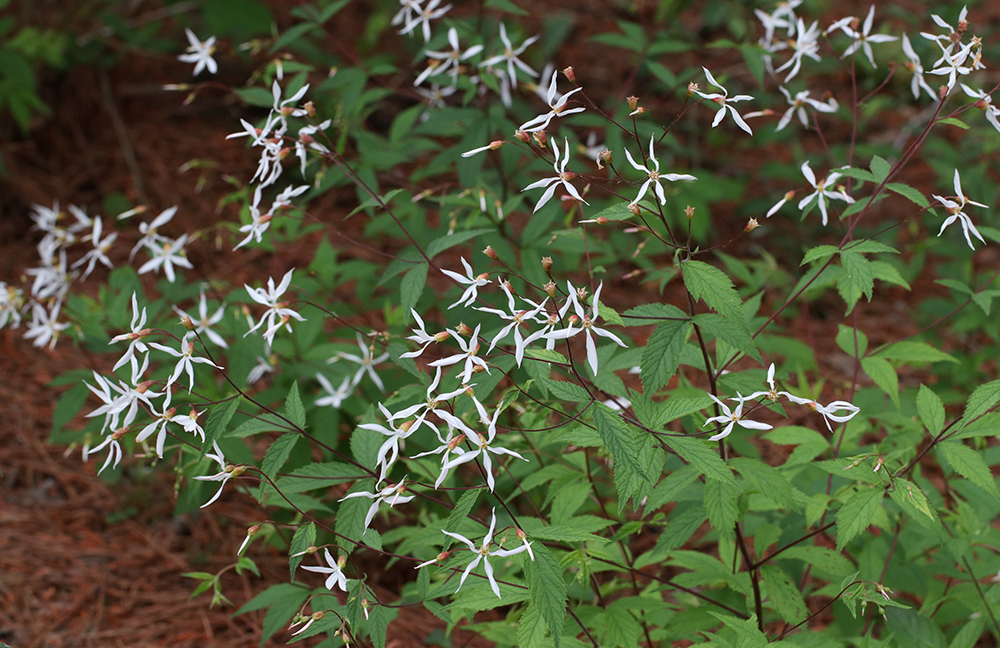
Mountain Indian physic. Photo by Debbie Roos.

Burgundy lanceleaf blanket flower with dwarf wild indigo in early May. Photo by Debbie Roos.

Garden heliotrope, wild indigo, Carolina phlox, downy wood mint, evening primrose, and eastern blue star in early May. Photo by Debbie Roos.

Purple milkweed in early May. Photo by Debbie Roos.

Parking lot island in early May. Photo by Debbie Roos.

Carolina lupine in mid-May. Photo by Debbie Roos.

White wild indigo in mid-May. Photo by Debbie Roos.
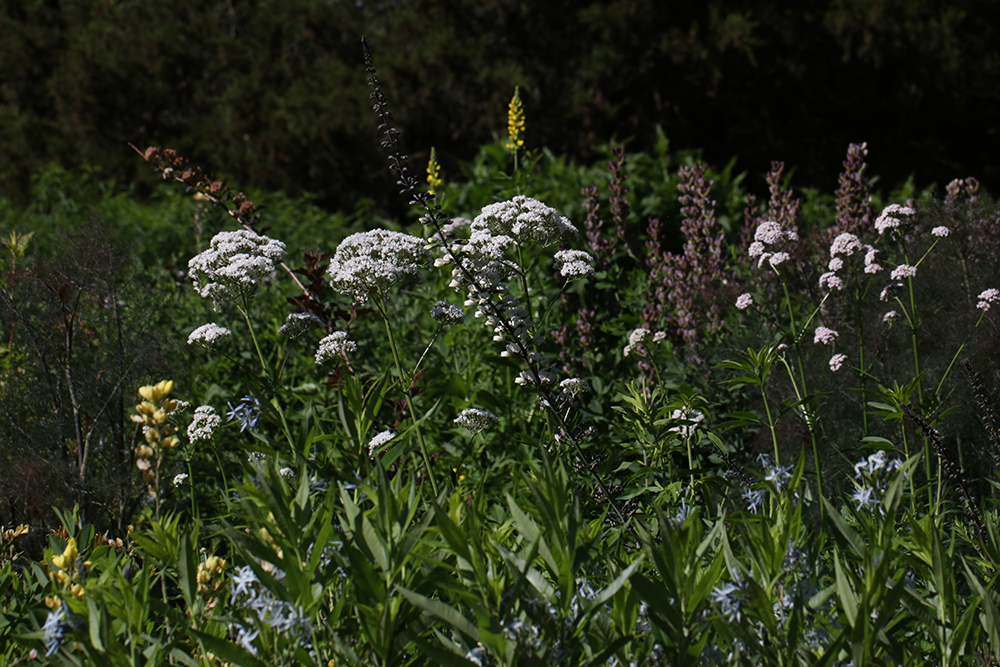
Parking lot island bed in mid-May. Photo by Debbie Roos.

Bumble bee rear on wild indigo showing full pollen baskets on hind legs in mid-May. Photo by Debbie Roos.
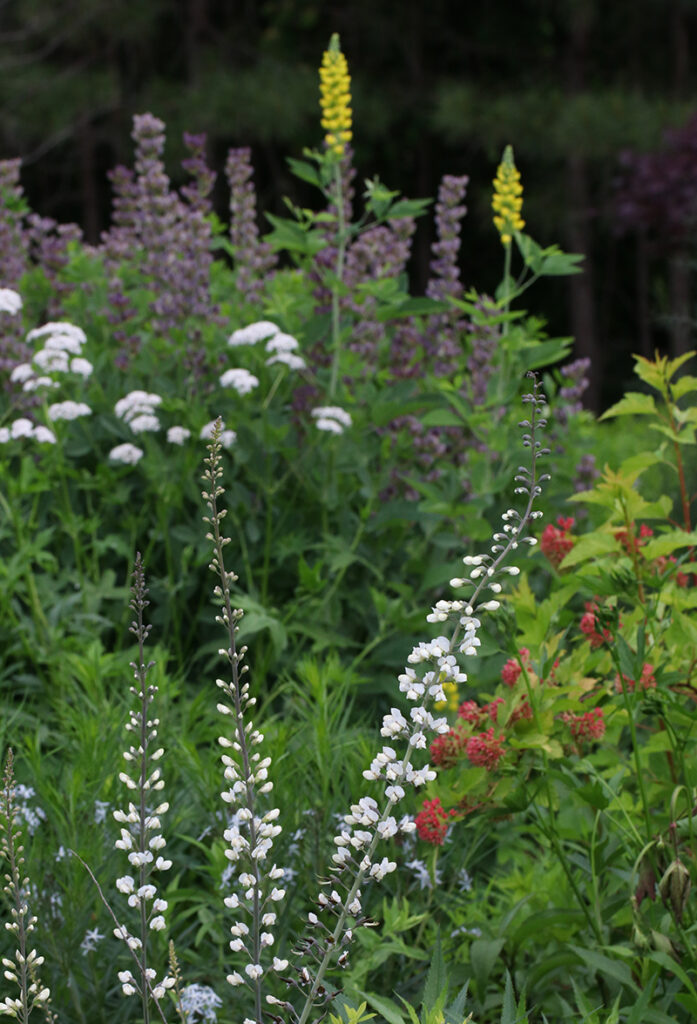
Carolina lupine, wild indigo, eastern ninebark, and garden heliotrope in mid-May. Photo by Debbie Roos.
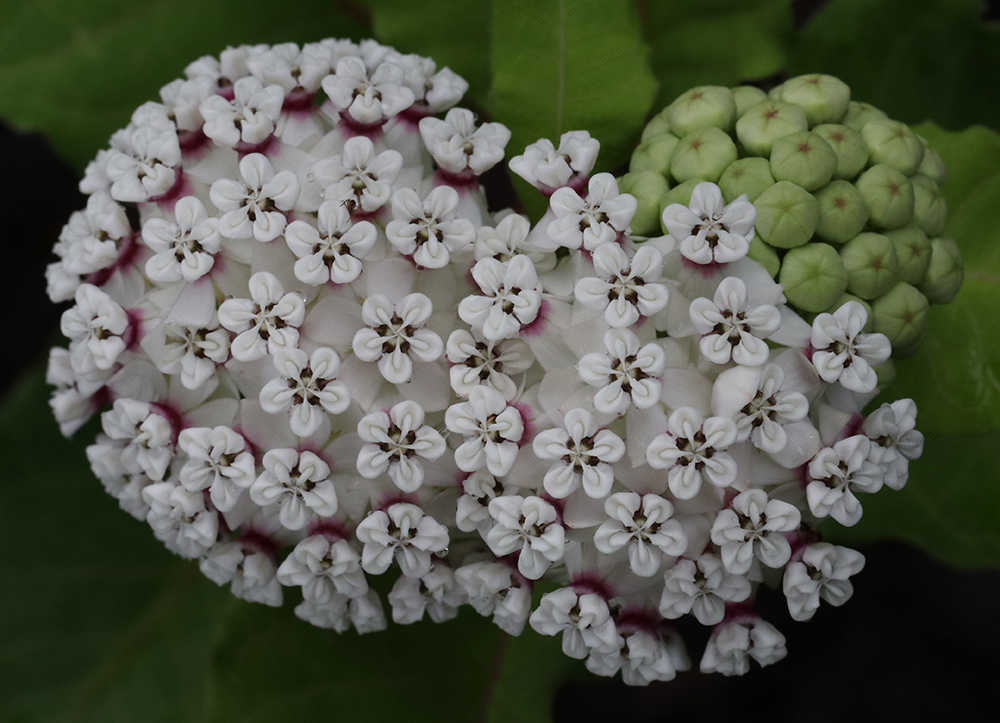
Redring milkweed in mid-May. Photo by Debbie Roos.
For more information:
Pollinator Paradise Garden website
What’s in Bloom in the Pollinator Garden – updated bi-weekly!


